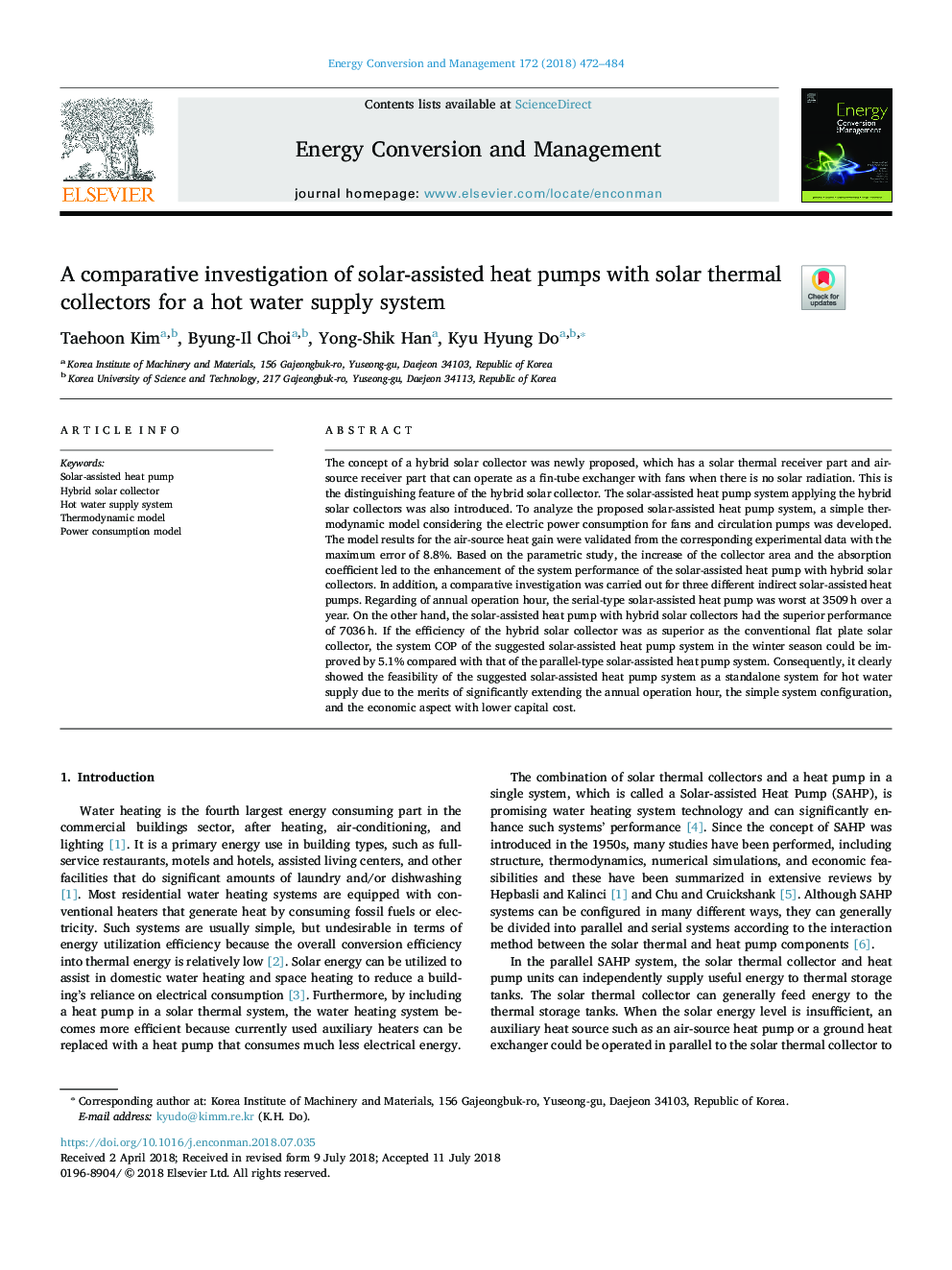| Article ID | Journal | Published Year | Pages | File Type |
|---|---|---|---|---|
| 7157940 | Energy Conversion and Management | 2018 | 13 Pages |
Abstract
The concept of a hybrid solar collector was newly proposed, which has a solar thermal receiver part and air-source receiver part that can operate as a fin-tube exchanger with fans when there is no solar radiation. This is the distinguishing feature of the hybrid solar collector. The solar-assisted heat pump system applying the hybrid solar collectors was also introduced. To analyze the proposed solar-assisted heat pump system, a simple thermodynamic model considering the electric power consumption for fans and circulation pumps was developed. The model results for the air-source heat gain were validated from the corresponding experimental data with the maximum error of 8.8%. Based on the parametric study, the increase of the collector area and the absorption coefficient led to the enhancement of the system performance of the solar-assisted heat pump with hybrid solar collectors. In addition, a comparative investigation was carried out for three different indirect solar-assisted heat pumps. Regarding of annual operation hour, the serial-type solar-assisted heat pump was worst at 3509â¯h over a year. On the other hand, the solar-assisted heat pump with hybrid solar collectors had the superior performance of 7036â¯h. If the efficiency of the hybrid solar collector was as superior as the conventional flat plate solar collector, the system COP of the suggested solar-assisted heat pump system in the winter season could be improved by 5.1% compared with that of the parallel-type solar-assisted heat pump system. Consequently, it clearly showed the feasibility of the suggested solar-assisted heat pump system as a standalone system for hot water supply due to the merits of significantly extending the annual operation hour, the simple system configuration, and the economic aspect with lower capital cost.
Related Topics
Physical Sciences and Engineering
Energy
Energy (General)
Authors
Taehoon Kim, Byung-Il Choi, Yong-Shik Han, Kyu Hyung Do,
